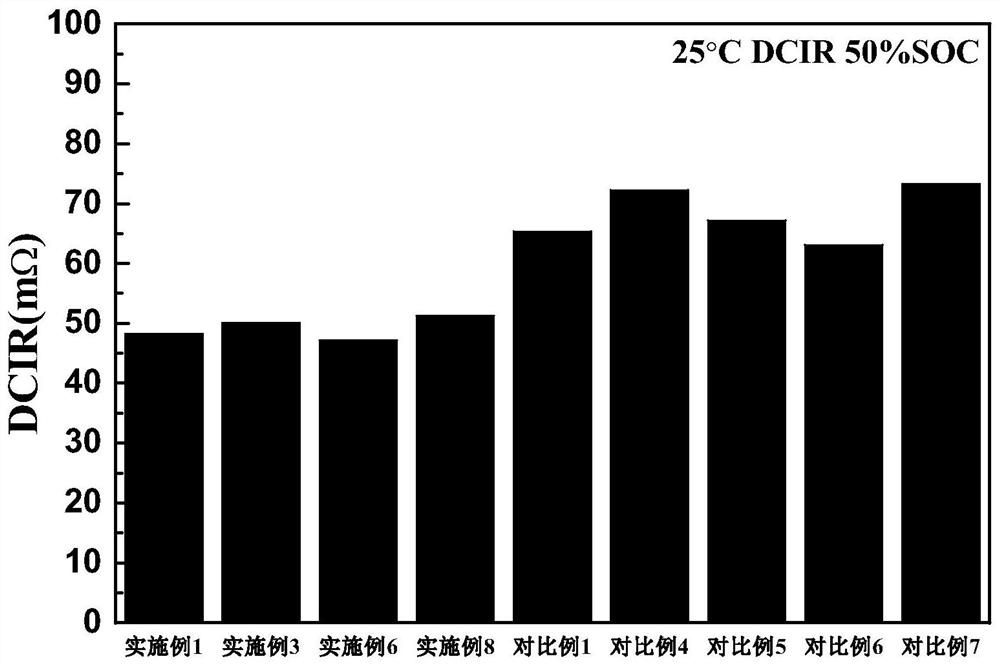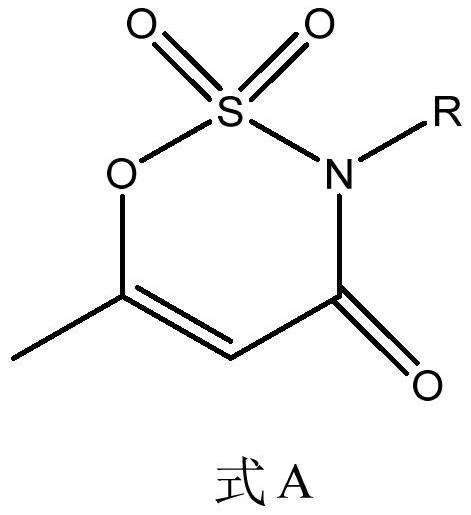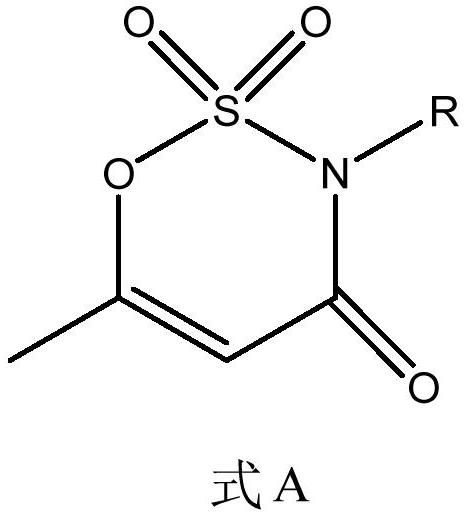Electrolyte additive, non-aqueous electrolyte and lithium ion battery
An electrolyte additive, non-aqueous electrolyte technology, applied in secondary batteries, circuits, electrical components, etc., can solve the problems of corrosion of battery cathode materials, poor compatibility, insufficient energy density, etc., and achieve low-temperature cycle performance improvement and high-temperature cycling. The effect of performance improvement and high temperature storage performance improvement
- Summary
- Abstract
- Description
- Claims
- Application Information
AI Technical Summary
Problems solved by technology
Method used
Image
Examples
Embodiment 1
[0039] In a nitrogen-filled glove box (O 2 2 (02 2 (0<1ppm), slowly add 20g of lithium hexafluorophosphate into the mixed solution, and mix well to make a non-aqueous electrolyte.
[0040] The non-aqueous electrolyte formulas of Examples 2-17 and Comparative Examples 1-7 are shown in Table 2, and the steps of preparing the non-aqueous electrolyte are the same as in Example 1.
[0041] Table 2 Non-aqueous electrolyte formula
[0042]
[0043]
[0044] Wherein TFSI is trifluoromethanesulfonamide, and its structural formula is as follows:
[0045]
PUM
 Login to View More
Login to View More Abstract
Description
Claims
Application Information
 Login to View More
Login to View More - R&D
- Intellectual Property
- Life Sciences
- Materials
- Tech Scout
- Unparalleled Data Quality
- Higher Quality Content
- 60% Fewer Hallucinations
Browse by: Latest US Patents, China's latest patents, Technical Efficacy Thesaurus, Application Domain, Technology Topic, Popular Technical Reports.
© 2025 PatSnap. All rights reserved.Legal|Privacy policy|Modern Slavery Act Transparency Statement|Sitemap|About US| Contact US: help@patsnap.com



